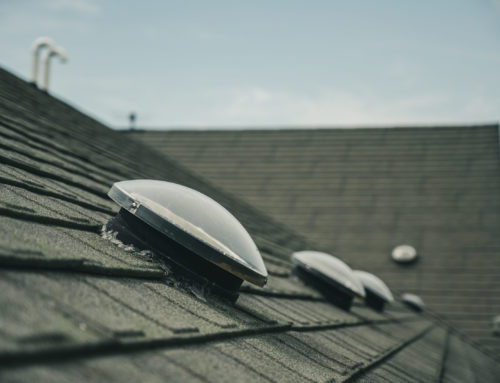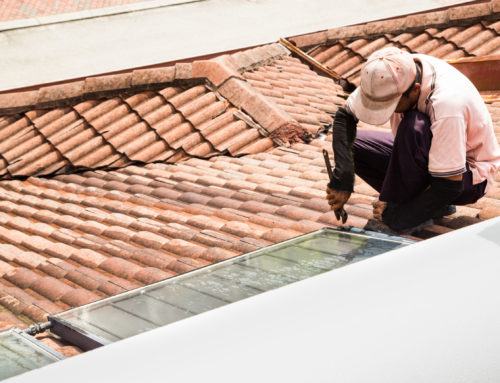How Does Solar Energy Work?
Solar energy comes with significant advantages over other forms of energy sources like fossil fuels, wind, bioenergy, geothermal, and hydroelectricity. Individuals using solar power can invest in generating energy. There is an initial capital needed to set up a solar system, but the costs are dropping dramatically.
A solar panel or PV panel comprises a collection of solar photovoltaic cells responsible for absorbing sunlight and converting the light into electricity. In most installations, several solar panels are connected to form a solar module or array. Solar panels have components like glass casing, a solar cell or PV cell, metal frame, solar tiles, gallium arsenide, back sheet, solar shingles, and cabling used to transmit electricity. Solar cells are manufactured from silicon material and designed with both a negative layer and a positive layer to make an electric field resembling those of batteries.
It’s essential to understand how solar panels work if you want to install solar energy. An inverter is needed to help in converting the DC electricity that is produced by a solar photovoltaic panel or solar PV panel to make it become alternating current (AC). The alternating current is routed to an electrical panel where a homeowner directly uses it. Whatever electricity is not currently used is connected to a battery bank that acts as a storage for the power, or connected to the grid.
When the sun isn’t shining during cloudy days or at night, your home continues to get power from the electric grid if you are connected. When connected, if you don’t have sufficient solar energy, you will enjoy power from the electrical grid. When the solar PV module generates more electricity than you currently are using, that overflow goes out of your home and is stored in the electrical grid. Net metering policies are applied by many utilities that help credit the homeowners for their excess solar power.
What Are The Different Types Of Solar Panels?
There are three main types of solar technologies used in solar panel manufacturing; they are monocrystalline, polycrystalline, and thin-film amorphous solar panels. Both monocrystalline and polycrystalline panels use solar cells made from crystalline silicon. When you are buying solar panels, almost all the quotes you get are based on crystalline solar panels. In the past, the most commonly used solar panels for residential installations were monocrystalline with a monocrystalline cell; however, for the last few years, we’ve seen a change in the types of solar panels used. Polycrystalline solar panels have become the most common solar panels for residential solar installations in the United States.
While polycrystalline panels are becoming more popular, the choice between poly and mono panels isn’t stressful. The most important thing is to make sure that you find a reputable brand for your solar panels. A trusted solar panel brand is with a company that has invested heavily in producing quality panels.
Mono panels operate at an average efficiency of 9% to 20%. In appearance, mono solar cells possess a uniform look, and the monocrystalline solar cell makes a distinctive shape of small black squares with corners that are notched. The panels manufactured using these solar cells often have a black or white back sheet. In high temperatures, these panels tend to conduct electricity more efficiently. Also, in shaded conditions, they generate more power compared to a polycrystalline solar panel that is the same size. A monocrystalline panel is best suited for smaller rooftops. Their technology is well established, and the panels are durable.
Poly panels have an average efficiency of 12% to 16%, and they possess multifaceted, non-uniform, gem-like surfaces. They are typically blue and are a polycrystalline solar cell. These panels are less efficient and less expensive. When making the panels, there are fewer silicon cells that are wasted in the process. Polycrystalline has become more prevalent in recent years because of its production boom.
A thin-film amorphous silicon panel is an entirely different matter, however. A thin-film panel using cadmium telluride is less efficient and takes up a lot of roof space. A thin-film solar panel has an advantage over the crystalline technology because the thinner film solar panels perform better within low light conditions, such as when there is partial shading or in excessive heat. When it comes to thin-film solar cells, they are less efficient, with an average efficiency of 11% to 13%. The panels are larger and have a solid, uniform black appearance. Thin-film panels are available for commercial premises’ use. They use a new technology that is best suited for areas where space isn’t an issue. Being a low-cost option, they are easy to produce while being flexible, lightweight, and portable. However, they are less durable, and their lifespan is shorter.
What Are The Pros And Cons Of Different Solar Panels?
Each of the solar panels comes with its own set of pros and cons. When choosing a solar panel, you should look at your space, the roof, the tilt, and the level of sunshine that your roof receives. You also want to look for the most reputable brands for solar power in your area.
Monocrystalline Panels
Because mono panels are manufactured using the highest-grade silicon, they are the highest in terms of efficiency. When it comes to space efficiency, mono silicon panels are the most in-demand. Because they produce the highest power output, the monocrystalline silicon cells require less amount of space when you compare them with other kinds of panels. For instance, a homeowner who has a small area facing the direction of the sun can utilize these panels because they don’t need a large surface of the roof to mount them. However, mono panels produce slightly more energy per square foot space within an array.
Another advantage of mono panels is that they have a longer lifespan. Most monocrystalline silicon solar panels have a lifespan of about 25 to 35 years. Most of the crystalline panel manufacturers offer a 25-year warranty because they are made using crystalline silicon cells and material, which is not only very inert but also very stable.
Mono panels tend to offer more efficiency in the conversion of sunshine during warm weather. Electricity production dips as the temperature goes up, which is typical in all solar cells. Each monocrystalline silicon panel comes with a specification part that features what is known as the temperature coefficient. A temperature coefficient is a level that every solar panel production dips as temperatures increase.
One of the disadvantages of mono panels is that they are expensive. Recently, there has been a boom in the production and installation of polycrystalline cells. The module production efficiencies of poly solar panels have made them more ordinary. Poly panels have thus benefited from the cost advantages when compared to a monocrystalline solar panel. Most of the manufacturers of mono panels today target the premium end of the solar panel market.
Polycrystalline Panels
When it comes to manufacturing poly panels, the process is more straightforward while also being cost-efficient. There is little waste of silicon in making these panels when compared to mono panels. Poly panels, to a small degree, have lower heat tolerance compared to mono panels. Compared to mono panels, polycrystalline solar panels have a lower efficiency because of the reduced purity of the silicon used to make the silicon panel. Typically, their efficiency ranges from 13% to 16%.
Another drawback is that these panels have lower space efficiency. When installing them, you generally have to cover a larger area to produce the same output of electrical power as you can with mono silicon solar panels. However, this doesn’t mean that all mono solar panels perform better than those based on polycrystalline silicon. The speckled blue color design of the polycrystalline panels makes them less aesthetically pleasing compared to the uniform look of mono panels and thin-film solar panels.
Thin-film Amorphous Panels
The manufacturing of thin-film is based on mass production, making the panels potentially cheaper to manufacture compared to the crystalline-based solar cells. Also, the uniform appearance of thin-film makes them more appealing. The performance of thin-film solar panels doesn’t suffer as much as crystalline solar cells from shading and high temperatures. You may find that a thin-film panel is a preferred choice in situations where you have no issues with space.
The panels produce less power compared to a crystalline panel. For example, SunPower’s mono panels release up to four times the level of electricity or energy released by a thin-film solar cell for a similar amount of space. The lower space efficiency means that installing the panels and the support structures or cables is going to be high. Another downside to thin-film cells is that they tend to degrade faster compared to monocrystalline and polycrystalline panels. This is one of the reasons why the manufacturers of thin-film panels offer a shorter warranty.
Which Type Of Solar Panel Is The Best For My Home?
Now that you know the pros and cons of the different solar panels, including monocrystalline, polycrystalline, and thin-film, you want to find out which one suits your home’s solar installation needs.
Space Availability
Many homeowners do not have sufficient space to install thin-film panels, so they opt for mono or poly panels. You want to go for the solar panels that have the highest-rated output of power. This way, you make the most of the solar technology in terms of production and installation. Both monocrystalline and polycrystalline panels are ideal options and provide similar benefits. Although a polycrystalline panel tends to have less space efficiency and mono panels produce more power, you find that these scenarios don’t always happen. Mono panels are a bit more expensive, but they take up less space compared to poly panels. If, for example, you have one mono panel and one poly panel, both with a rating of 220-watt, typically they would be able to generate the same amount of electricity; however, the mono panels would take up less space.
Lower Costs
Thin-film panels can be the best choice when it comes to cost-saving in installing solar technology; however, they are not as typical for residential solar installation. This means that the most common panels you can install at a cheaper cost would be polycrystalline panels designed to suit residential solar installation needs. A second choice would be monocrystalline panels. While a bit expensive, they have an advantage of space-efficiency needed for people with small roof surface areas.
Right Solar Fit For You
How your roof is designed can affect the amount of sunlight that hits the surface. You want to have a solar system that receives the highest amount of sun. When the solar installer comes to your house to give you a quote for solar power, they will look at the amount of space that you have on your roof and the roof design. Then, they can give you the best advice on the solar panel type you should install to maximize the energy you will be generating.
Whether you decide to go with monocrystalline silicon solar panels or you opt for polycrystalline silicon solar panels, the secret is to get the best brand and have it installed by a qualified solar installer in your area. The solar installer expert should also explain their preferred option and the reason they choose a specific solar brand over another. Typically, you will find mono or poly crystalline-based panels will be the right fit for your home, to generate clean, renewable energy.

